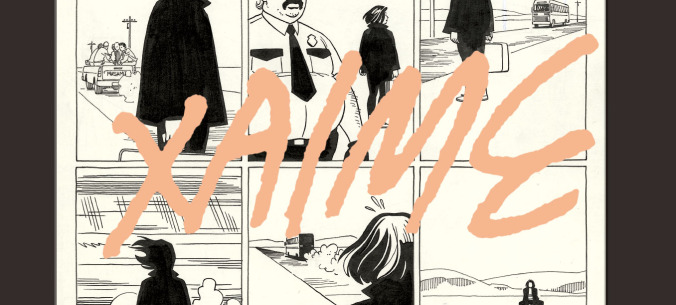The rise of the Artist Edition is a highlight of the last decade in comics. IDW has been regularly releasing oversized hardcovers reproducing original artwork with full-color, high-resolution scans, and they are the closest most readers will get to raw pages from legends like Will Eisner, Jack Kirby, and Mike Mignola. Fantagraphics is offering its own version of those books with its new Studio Editions, which began earlier this fall by spotlighting Hal Foster’s impeccable original artwork for Prince Valiant. The Jaime Hernandez Studio Edition (Fantagraphics) is a step up thanks to a new interview between the cartoonist and Fantagraphics publisher Gary Groth, a conversation that illuminates the classic Love And Rockets stories in this book.
Focusing on the visual aspects of Hernandez’s work, the two men explore the specifics of Hernandez’s creative process and evolution: the tools he uses; his artistic influences; how he puts together pages and panels. He talks about how the punk movement gave him freedom to follow his instincts and passions, and the difficulty and importance of tapping into that spirit now that he’s a responsible parent. The section on drawing characters from the inside out delves into the importance of bones, joints, muscles, and fat in Hernandez’s figures, establishing that the effect of gravity on each is the most essential aspect of expression. This awareness of the unseen natural force is indicative of Hernandez’s general approach to the world of his stories, which is much larger than what readers are shown on the page.
With this information in mind, the standalone panel from “Wigwam Bam, Part 8” showing a car driving over the various layers underneath the Earth’s surface becomes an encapsulation of Hernandez’s environmental philosophy. The interview encourages readers to think about the intent behind the imagery, and how much work goes into creating stories that seem effortlessly immersive and emotionally engaging. Other comics included in this book include “In The Valley Of The Polar Bears,” “Spring 1982,” and “Easter Hunt,” along with the trio of “Chester Square,” “Maggie The Mechanic, Perla The Prostitute,” and “It’s Not That Big A Deal,” which provide a clear narrative arc for Hernandez’s central character, Maggie Chascarillo.
The easiest way to get extra value from comics and graphic novels is to reread them without looking at the text, which reveals more about how artistic choices inform the script. With Artist/Studio Editions of colored work, readers get the opportunity to read landmark stories in stark black-and-white, which invites them to spend more time examining the linework. The stories in Hernandez’s book were printed in black-and-white, but they are still altered by this new presentation, which spotlights the rich detail of his inking, the dramatic power of his compositions, and his evocative contrast of light and dark. The energy of the creation process is best represented by the flurry of pen strokes that create blacked-out areas on the page, evoking the action behind the inking that doesn’t carry over to the solid blacks of the final product.
Hernandez’s signature is printed with reflective coppery lettering that, when the light hits it just right, makes it look like the interior contents are glowing. It’s an appropriate effect given that Hernandez’s work radiates warmth as it explores the full scope of human emotion. At $150, this is a serious investment, but die-hard fans of Jaime Hernandez will gain new appreciation for his work after reading this book. And for lovers of cartooning, it doesn’t get much better than what Hernandez accomplishes in these stories, revealing how this art form can reflect the world with remarkable clarity, specificity, and grace.


 Keep scrolling for more great stories from The A.V. Club.
Keep scrolling for more great stories from The A.V. Club.